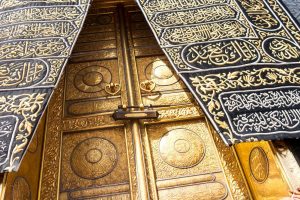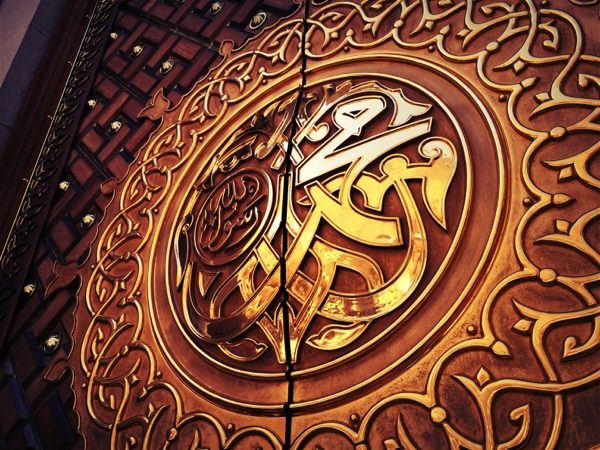The Life and Character of the Seal of Prophets – Volume II
Chapter vi
Rukhsatanah [marriage] of Hazrat ‘A’ishahra and an Exposition of Her Age at the Time, the Issue of Polygamy and Two Fabricated Incidents [Cont.]
We continue with the first ever serialisation of the newly translated Volume II of Hazrat Mirza Bashir Ahmadra’s outstanding biography, Seerat Khatamun Nabiyyin, on the life and character of the Holy Prophet Muhammadsa. This is arguably the best biography on the Prophet ever written. Each month we will present extracts from chapters of the book. Here, we continue with Chapter VI.
translated from the urdu by ayyaz mahmood khan
At this instance, it is also necessary to mention that the marriage of Hazrat ‘A’ishahra took place under specific divine indication. It is recorded in a Hadith that prior to her marriage, the Holy Prophetsa saw a dream in which an angel presented a silk cloth to him and said, “This is your wife.” When the Holy Prophetsa opened it, he found upon it a portrait of Hazrat ‘A’ishahra. However, the Holy Prophetsa did not mention this dream to anyone, and understood that if this dream was to be fulfilled in the literal sense, then Allah would arrange for it Himself. As such, this bond was ultimately established through the proposal of Khaulah bint Hakimra.1 It is also mentioned in the Ahadith that in her last days, Hazrat Saudah bint Zam‘ahra gave her own turn of company with the Holy Prophetsa to Hazrat ‘A’ishahra, and in this way Hazrat ‘A’ishahra received a double opportunity to benefit from the company of the Holy Prophetsa. In that era, the Shari‘at was being revealed, and the foundation of new rules of practice were being established in every matter. For this reason, when Hazrat Saudahra grew old and became unable to fulfill her duties as a spouse completely, she thought to herself that in this state, perhaps the Holy Prophetsa would seek a separation from her; so she offered her turn to Hazrat ‘A’ishahra herself, and submitted to the Holy Prophetsa that, “O Messenger of Allah! I no longer require my turn.”2 This surmise of Saudahra was absolutely false and was merely an unfounded doubt. However, since the Holy Prophetsa was especially concerned for the education and training of Hazrat ‘A’ishahra and since she was worthy of receiving special attention due to her age and characteristics, the Holy Prophetsa accepted this proposal of Hazrat Saudahra. Nevertheless, even after this, the Holy Prophetsa continued to regularly visit Hazrat Saudahra, and like his other wives, he would show affection towards her and take care of her comfort. There is a difference of opinion with respect to the literacy of Hazrat ‘A’ishahra. Though, it is established by a narration in Bukhari that she was in the possession of a written manuscript of the Holy Qur’an,3 wherefrom she personally dictated various verses to a Muslim from Iraq, which in the least, proves that she could in fact read. It is most probable that after her Rukhsatanah, she learned how to write, though various historians have stated that she was unable to write.4 Following the demise of the Holy Prophetsa, Hazrat ‘A’ishahra lived for more or less forty-eight years, and met her Beloved Creator in 58 A.H., during the month of Ramadan. At the time she was approximately sixty-eight years of age.
Polygamy Practiced by the Holy Prophetsa and its Wisdom
Along with the Rukhsatanah of Hazrat ‘A’ishahra the practice of polygamy began in the life of the Holy Prophetsa. Therefore, at this instance, it would not be inappropriate to write a brief note on this issue. However, prior to mentioning anything with regards to polygamy, it seems necessary to mention the purposes of marriage, as stipulated in the Islamic Shari‘at. The reason being that along with all its additional purposes, to some extent, polygamy depends upon reasons which are an offshoot of these very same original purposes. As such, it should be known that there are four purposes of marriage, which are derived from the Holy Qur’an. Firstly, for an individual to be safeguarded from various physical, moral and spiritual ailments and from their ill consequences. This aspect is referred to as Ihsan in the Arabic language, which literally means to be protected within a fortress; secondly, the continuation of human life; thirdly, life-long companionship and peace of heart; fourthly, the growth of relations of love and compassion. The Holy Qur’an states:
“O Ye Muslims! Allowed to you are all those women, except for those which have been alluded to above, that you appoint for them their dowries and marry them. However, the purpose of your marriage should be so that you may be safeguarded from ailments and evils, not that you should succumb to a life of lust and follow a way of pleasure and sensuality.”5
In this verse, the purpose of Ihsan has been mentioned. In other words: firstly, so that through marriage an individual may be safeguarded from falling victim to certain specific ailments of a physical nature, which develop as a result of celibacy; secondly, so that an individual may be safeguarded from certain spiritual and moral ailments, and does not become indulged in impure thoughts and lewd relations. This very fundamental purpose has been described in another verse as follows:
“O Ye Muslims! Remember that your wives are a garment for you, and you are a garment for them.”6
In other words, spouses are a means of safeguarding one another from evils and ailments, just as garments protect an individual from the hardships of cold and heat. In this verse, since women were also to be addressed, the manner of description has been made more subtle. Furthermore, this verse also alludes to the fact that men and women are also a means of hiding the weaknesses of each other, just as garments are also a means of concealment. Then, the Holy Qur’an states:
“O Ye Muslims! Your wives are a tilth for you, from which the harvest of your future generation is to be reaped; so now you may deal with your tilth how you like, and reap the harvest of your choice.”7
In this verse, the purpose of the continuation of human life has been mentioned. In other words, it must be ensured that the line of human offspring continues to flourish. Along with this, God the Exalted has also mentioned in a very subtle manner that when future progeny is to be brought into existence through wives, an individual should maintain relations with his wife in such a manner that future progeny is not ruined, rather, the best possible offspring is brought into existence. Then, He states:
“Allah the Exalted has created wives for you from among yourselves, so that you may find peace of heart in your relation with them, then God has made this relationship a means of love and tenderness between you.”8
In this verse, the third and fourth purposes of marriage have been mentioned; in other words, so that a husband and wife may find a life-long companion in one another, and may find comfort in their relationship with one another. Secondly, so that through marriage, a relationship of love and unity may be created between the relatives of both husband and wife, and in addition to blood-relations, through other ties, various families and various nations may receive opportunities to come together in a bond of love and companionship. Therefore, in the Islamic Shari‘at, four purposes of marriage have been mentioned: firstly, Ihsan, i.e., to be safeguarded from various physical and spiritual ailments and their consequences; secondly, the continuation of human life; thirdly, life-long companionship and peace of heart; fourthly, the joining of different families and different nations through a relationship of love and compassion. If one contemplates, not only are all of these purposes absolutely permissible and appropriate; rather, they are extremely pure and in complete accordance with human nature and the needs of mankind. Through these aspects, the relationship of husband and wife has been planted upon a most excellent foundation and a means has been developed by which the best possible fruit may be procured as a result of this relationship. Furthermore, in contrast to these purposes, the purpose which the Holy Qur’an has deemed as being unlawful, which Muslims have been instructed to abstain from, is the one of lust and sensuality.
Endnotes
1. Sahihul-Bukhari, Kitabun-Nikah, Babu Nikahil-Abkar, Hadith No. 5078
2. Sharhul-‘Allamatiz-Zarqani ‘Alal-Mawahibil-Ladunniyyah, by Allamah Shihabuddin Al-Qastalani, Vol. 4, p. 380, Saudah Ummul-Mu’minin, Darul-Kutubil-‘Ilmiyyah, Beirut, Lebanon, First Edition (1996)
3. Sahihul-Bukhari, Kitabu Fada’ilil-Qur’an, Babu Ta’lifil-Qur’an, Hadith No. 4993
4. Kitabu Futuhil-Buldan, by Ahmad bin Yahya bin Jabir Al-Baghdadi Ash-Shahiru Bil-Baladhuri, p. 478, Amrul-Hazzi, Al-Mausu‘atu Bi-Shari‘in Babil-Khalq, Egypt (1901)
5. The Holy Qur’an: An-Nisa’ (4:25)
6. The Holy Qur’an: Al-Baqarah (2:188)
7. The Holy Qur’an: Al-Baqarah (2:224)
8. The Holy Qur’an: Ar-Rum (30:22)



Add Comment